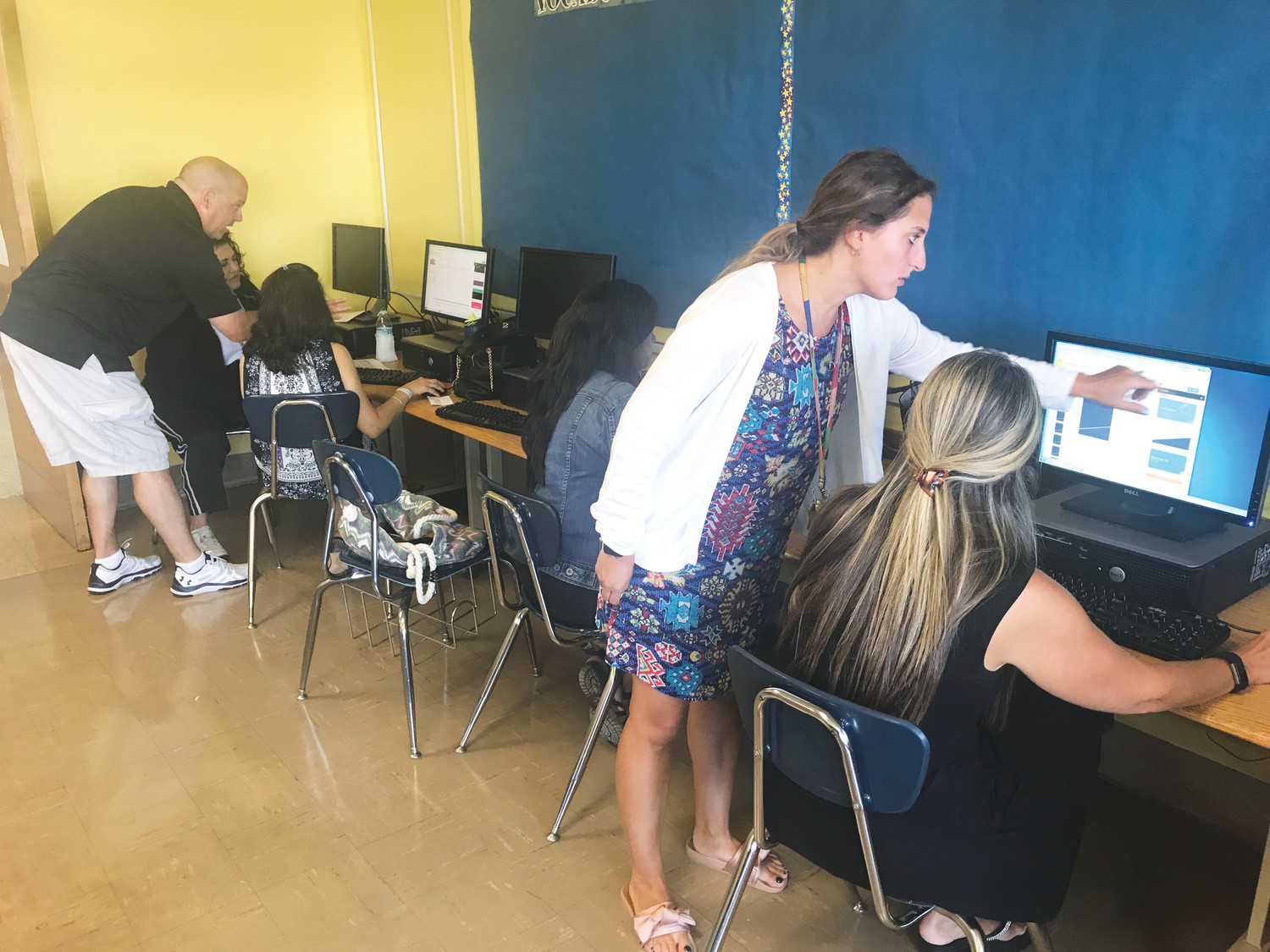Making space for new technology in school
Part two in the series “Educating the 21st Century Child.”
Only a decade or so ago, classroom desks were lined up in neat rows. Students faced the blackboard or whiteboard. Their ability to talk to one another and share — particularly when doing so on computers — was limited.
All that was so 20th century, and all of it is rapidly changing.
Educators are rethinking not only how they teach, but the very spaces they teach in as well. If students are to collaborate, then they must work in classrooms that foster communication. So, in many schools, the neat rows are out, and “collaborative spaces,” in which students can share in small groups, are in.
Teachers are no longer like conductors, stuck at the front of the classroom, directing the conversation, or lecturing old-school-style. Rather, they have become more like guides, school officials say. And central to their work is technology. Welcome to the 21st century classroom.
Full STEAM ahead
Increasingly, teachers are infusing STEAM (science, technology, engineering, art and math) or STEM (science, technology, engineering and math) into their curricula. The Hebrew Academy of the Five Towns and Rockaway, a private yeshiva on Central Avenue in Lawrence, is one such school having gone all in on STEM, and is converting its learning spaces in a big way to do so.
HAFTR’s old gym is being transformed into a state-of-the-art STEM center, with a 3D printer, a laser cutter and a Makerspace (a community engineering center, complete with a variety of tools) at the high school and middle school. The STEM center was designed to accommodate not only today’s students, but also pupils who will attend the school as far as a decade into the future.
Benjamin Gross, HAFTR’s technology director, said he believes STEM education is the contemporary version of the vocational education that dissipated in the last half of the 20th century, when there was a push to direct more students to college.
“Resources were directed more toward college-preparatory courses,” Gross said. “STEM education is the resurgence and rebirth of the industrial arts. Teaching a student how to create, market and be an entrepreneur is essential for someone seeking 21st century skills.”
Despite the new learning spaces, Gross said, HAFTR’s focus has been on education, not hardware. Staff development sessions are focused on new, tech-based ways to teach and guide students. “Our students start learning computer programming skills as early as kindergarten,” he said. “Our youngest techies can already tell you what an algorithm is and begin coding with simple robots.”
Integrating old and new
Despite the technology push, there are elements of the traditional education that must remain, educators insist. Dr. Shawn Robertson, an associate professor of child study, literacy/cognition and childhood and adolescent special education at St. Joseph’s College, said that elementary-school children still need to learn skills that develop their fine motor movements, such as handwriting.
“Those children born after 2001, they can’t live without technology. There is no separating them and the devices,” Robertson said. “They’re a connected generation. They expect to be taking pictures, screen shots of notes and be using a digital notebook.”
To ensure that teachers are keeping up with the latest technology, Robertson said, school districts need to conduct professional development in house and have support staff who can explain the technology. “Use Skype — plan on it — and show the teacher how to do it,” he said.
Dr. Terrence Bissoondial, a science teacher at Hewlett High School who also oversees the Hewlett-Woodmere School District’s research program, said that it is incumbent upon him to “stay current, lest I should be quickly relegated to obscurity or a relic of the 20th century.” The program has seen a great deal of success, including back-to-back grand prize-winning teams in the prestigious Siemens Competition in Math, Science & Technology in 2012 and 2013.
Through the research program, Bissoondial said, he teaches the skills he believes are necessary for success in this century. “The most important skills students should have are being able to process large amounts of data, knowing [how] to ask appropriate questions, understanding what tools are required and how to use them, and [how to] make sound decisions through logic and reasoning,” he said.
Rebecca Isseroff, a Lawrence High School chemistry teacher who has mentored Siemens competition winners and semifinalists, and top finishers in other prominent science contests, offered a few words of caution.
“It seems that the current generation of school-age children have indeed become easily adept at computer use, but unfortunately at the expense of verbal and reading comprehension, which were more highly developed in the students of the 20th century,” she said.
Isseroff said she believes the internet has today’s students jumping to quick conclusions and not fully comprehending entire sentences or paragraphs that they must master. She believes, however, that there is hope in collaboration. “Schools are doing their best to prepare students for the 21st century, but the students also have to carry their share of responsibility for success,” she said. “Schools are partners with the parents and children, and only if we work hard together will the outcome of a future generation of innovators and educated leaders become a reality.”






